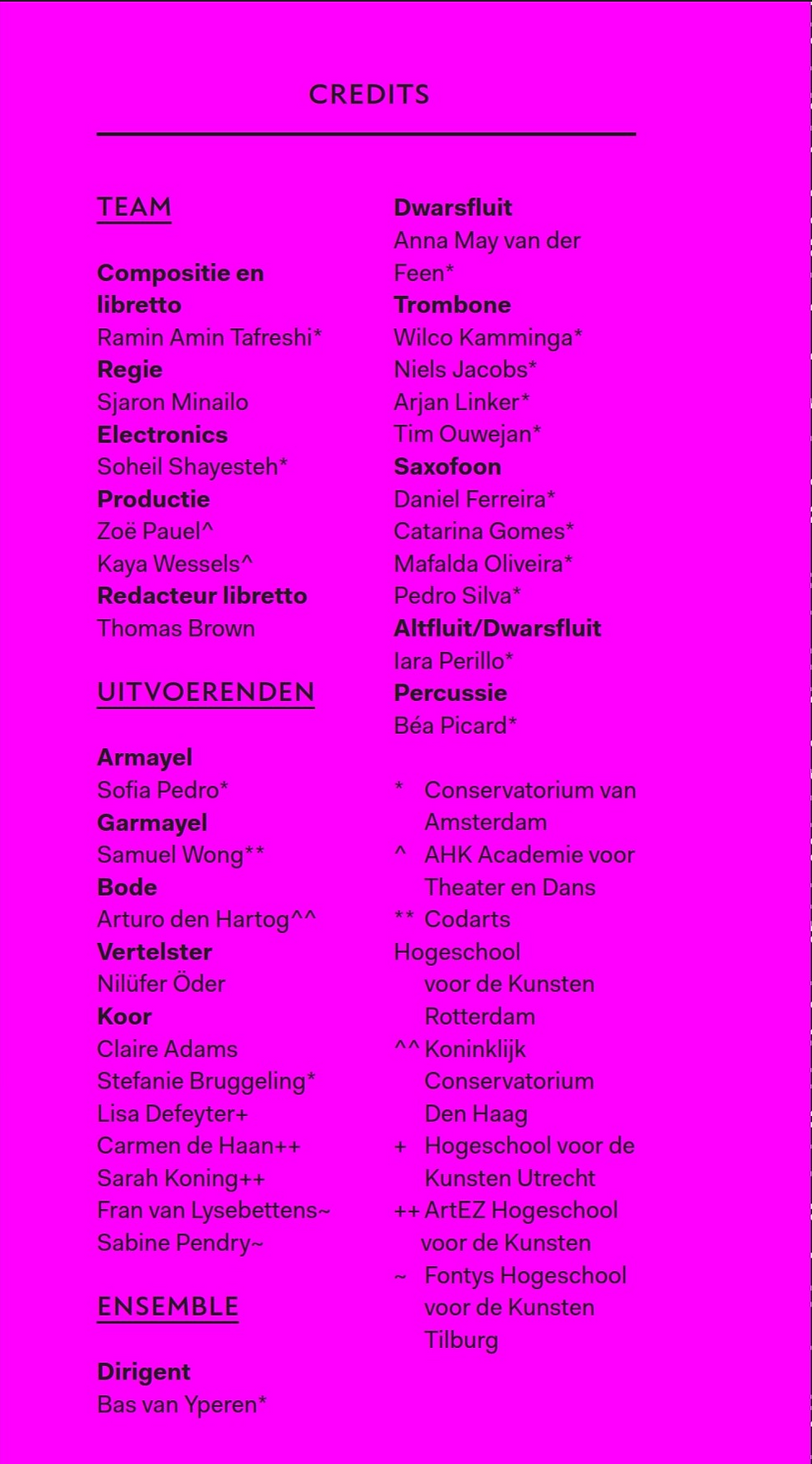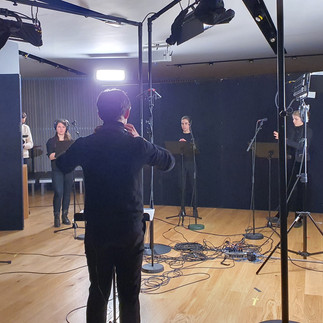Saoshyant: Behind the scene of creating a short opera
- Ramin Amin Tafreshi

- Apr 1, 2021
- 5 min read
Updated: Oct 28, 2024

For the last Opera Forward Festival 2021, I got an incredible opportunity to collaborate with this festival again to make another short opera, Saoshyant. This time, in collaboration with a great and well-known opera director, Sjaron Minailo, and with Electronic Musician, Soheil Shayesteh.

The Beginning: Concept, Inspirations & Libretto
The start of the project goes back to the summer of 2020 when, under the direction and supervision of Sjaron Minailo, I started to research and read many different literature, stories, myths, and articles, as well as explore many other artworks, from theatre to paintings, and opera to movies. It was all to find the concept of the opera. Our main question was: Why are we telling a story? What is the urgency to create an opera? What should be the message beneath the story?
I have always been fascinated by subjects related to society. I love seeing people's interactions, behaviours and beliefs and researching their societal consequences. And that was how I started to search for the urgency to tell and the reason to create.
In Saoshyant, as a composer and librettist, I am criticising the passive society that is always waiting for someone else to bring about changes and come up with solutions to different problems. In fact, by looking at the society around us, many examples recall this way of behaviour within our societies. People who are waiting for the governors and politicians to make changes related to the environment, society, and education; people who always expect others to find solutions for different challenges; and those who are not aware of their roles and their responsibilities towards society but are expecting others to behave as such. In other words, this opera reflects on human interactions and gives a solution that will lead us to a better community. Furthermore, I came back to my cultural roots in writing the libretto and the music.
The original story comes from a famous Persian myth, "Zahhak: The Serpent King," from the historic and precious book Shahnameh. Furthermore, many Persian elements in the music are integrated with Western techniques. Thus, the message beneath the work can be heard and understood universally.

In the original story, Armayel and Garmayel are siblings and work as royal chefs in Zahhak's Palace. Every night, they must kill two young people and feed the snakes on the king's shoulders by their brains. In a parallel layer, the original story introduces Fereydoon, who comes back as the saviour and helps Kaveh to overthrow Zahhak. In my adaptation, Armayel and Garmayel ask themselves, "What would have happened if there was no saviour?" And the question arises: "Will they take the responsibility to bring about change and sacrifice themselves for the better good?"
With such a concept and message in mind, I started to write the libretto on an adaptation of the famous story from Shahnameh, written in the 11th century by A. Ferdowsi. In this adaptation, you are taken to the mythical kingdom of Zahhak, the serpent king and search for the real 'Saoshyant' of that story. Saoshyant, the opera's title, is the Avestan language expression that means "one who brings benefit". This person is considered an eschatological saviour who will advent to humanity and make the world perfect and immortal. This person is the one who will put an end to all the misery and oppression, the one who will eventually bring the final renovation of the world in which evil will finally be destroyed.
Sometimes you need to choose between your beloved ones, Sometimes you need to kill your darlings. Saoshyant, Act I, Ramin Amin Tafreshi

Nilüfer Öder: The Storyteller
Right from the beginning of the project, there was always a concern that people might not know the main story, while the whole opera relied on that. On the other hand, the opera was supposed to be recorded in its shorter version, and that could make it difficult to understand the connections in the storyline. Consequently, with the suggestion of the director, we decided to start the premiere by creating an introduction scene and telling the original story by the actress and storyteller, Nilüfer Öder.

The piece has been written for three solo singers (soprano, baritone, countertenor), female vocal ensemble, two flutes, trombone quartet, percussions, and electronics.

During the production of this opera, many musicians and artists from all over the Netherlands got together and put so much effort into making this project come true. Artists and musicians, students and alumni from Conservatorium van Amsterdam, Academie voor Theater en Dans, Codarts Hogeschool voor de Kunsten Rotterdam, Koninklijk Conservatorium Den Haag, Fontys Hogeschool voor de Kunsten Tilburg, Hogeschool voor de Kunsten Utrecht, and ArtEZ Hogeschool voor de Kunsten. Furthermore, a complete team of sound engineers, videographers and light designers from the Dutch National Opera got involved during the recording days to give life and meaning to this opera.
However, due to the complications that have been caused by the Covid 19 Pandemic and the limitations related to it, we had to reduce and limit our production to the premiere of the first act. Back in the time, recording the full piece with the full ensemble, choir and singers all together in one place was not possible. As a result, the real challenge was to record the ensemble and singers in smaller groups. Later on, in the post-production process, Soheil Shayesteh worked on the electronics and created a new dimension in the piece.
The recording of this project took place in February and March 2021 at the Dutch National Opera and Conservatorium van Amsterdam.
For Saoshyant's composition, the young composer took both a Western story and an ancient folk tale from Ancient Persia as the starting point: Goethe's Faust and the myth of Zahhak. The stories have different interfaces. For example, both title characters see no way out and then they both sell their souls to the devil: “I have always been fascinated by these kinds of mythical legends. Especially because every culture knows them, keeps telling them and stories are dedicated to them in every art form. These stories are all ultimately grounded in the concept of "waiting"; waiting for a saviour. Such stories also give people hope in a sense - certainly in times like these - but they also make people very passive. Ultimately, the change has to come from within; from within ourselves. This is also what the two protagonists of my opera will do; they take matters into their own hands and thus bring about change.” Naomi Takens - Interview with Opera Forward Festival Magazine


** Update: Saoshyant has been nominated for the Ahk Graduation Awards in 2022.






















































